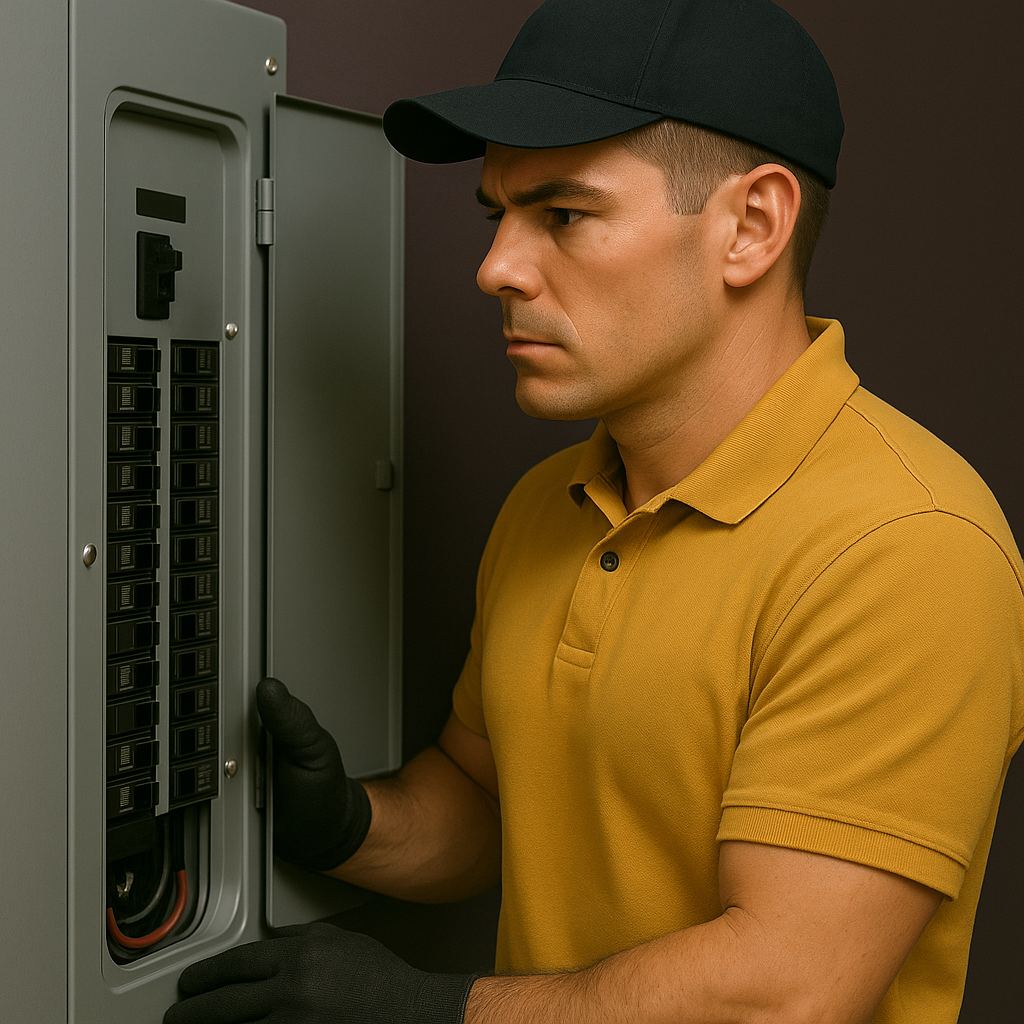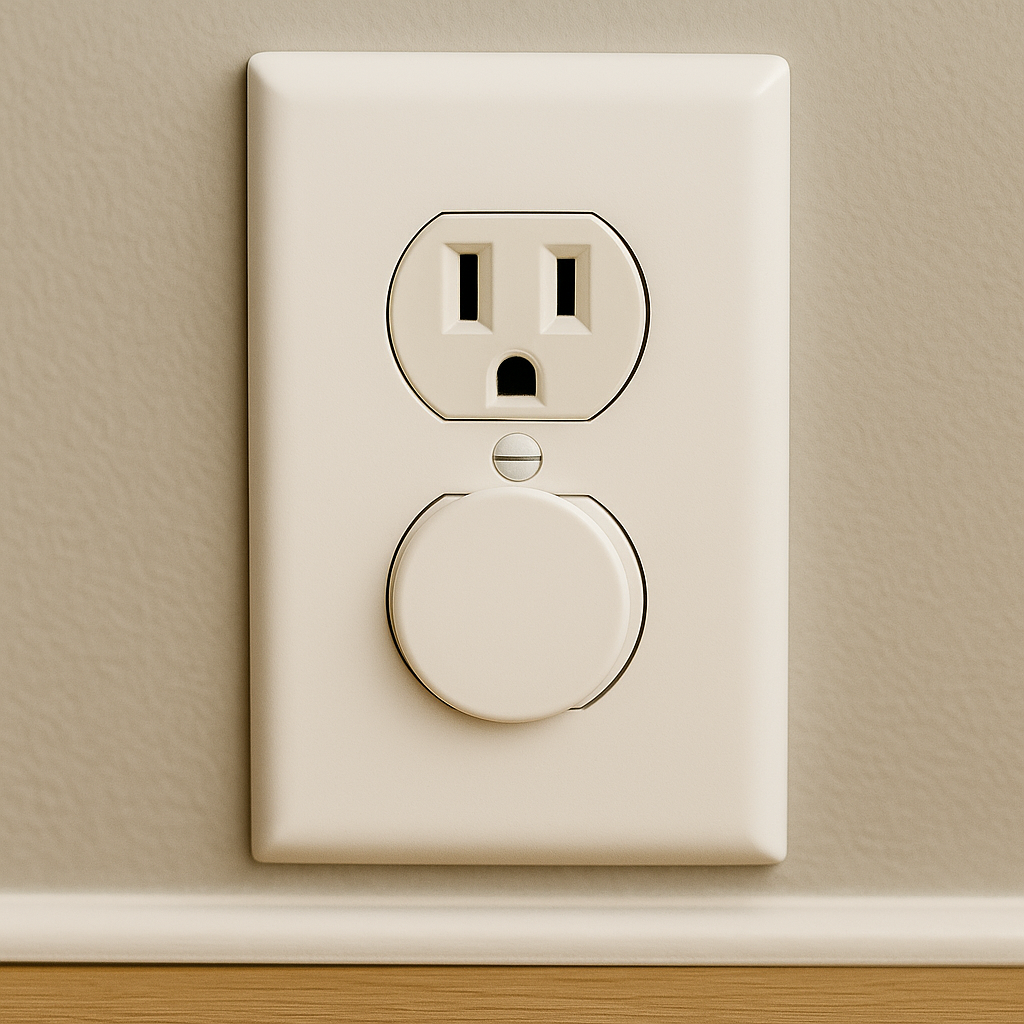How to Safely Reset a Tripped Circuit Breaker
Introduction
A sudden power outage can turn even the simplest household chore into an unexpected challenge. More often than not, the culprit is a tripped circuit breaker—your home’s built-in safeguard against electrical overloads, short circuits, and ground faults. While the idea of opening an electrical panel might feel intimidating, resetting a breaker is a straightforward process when approached with the right knowledge and precautions. In this comprehensive guide, we’ll walk you through each step: from understanding why breakers trip and gathering the proper safety gear, to methodically restoring power and preventing future interruptions. Whether you’re a seasoned DIYer or a homeowner seeking greater confidence, this article will equip you with the expertise to keep your electrical system running smoothly and safely.
Table of Contents
- Why Breakers Trip
- Safety First: Gear You Need
- Finding Your Breaker Panel
- Resetting the Tripped Breaker
- Restoring Power Gradually
- Troubleshooting Persistent Trips
- Preventing Future Breaker Trips
- Conclusion
- FAQs
Why Breakers Trip
Circuit breakers are designed to interrupt electrical flow when current exceeds safe levels. An overload occurs when too many appliances draw power on a single circuit, forcing the breaker to cut off electricity before wires overheat. Short circuits happen when a hot wire comes into contact with a neutral wire, creating an abrupt surge of electricity that could damage devices or wiring. Ground faults arise when a hot conductor touches a grounded surface, a risk especially in damp environments like bathrooms and kitchens. Recognizing these underlying causes not only helps you diagnose the problem but also empowers you to take steps—such as redistributing appliances or replacing damaged wiring—that address the root issue rather than simply flipping the switch.
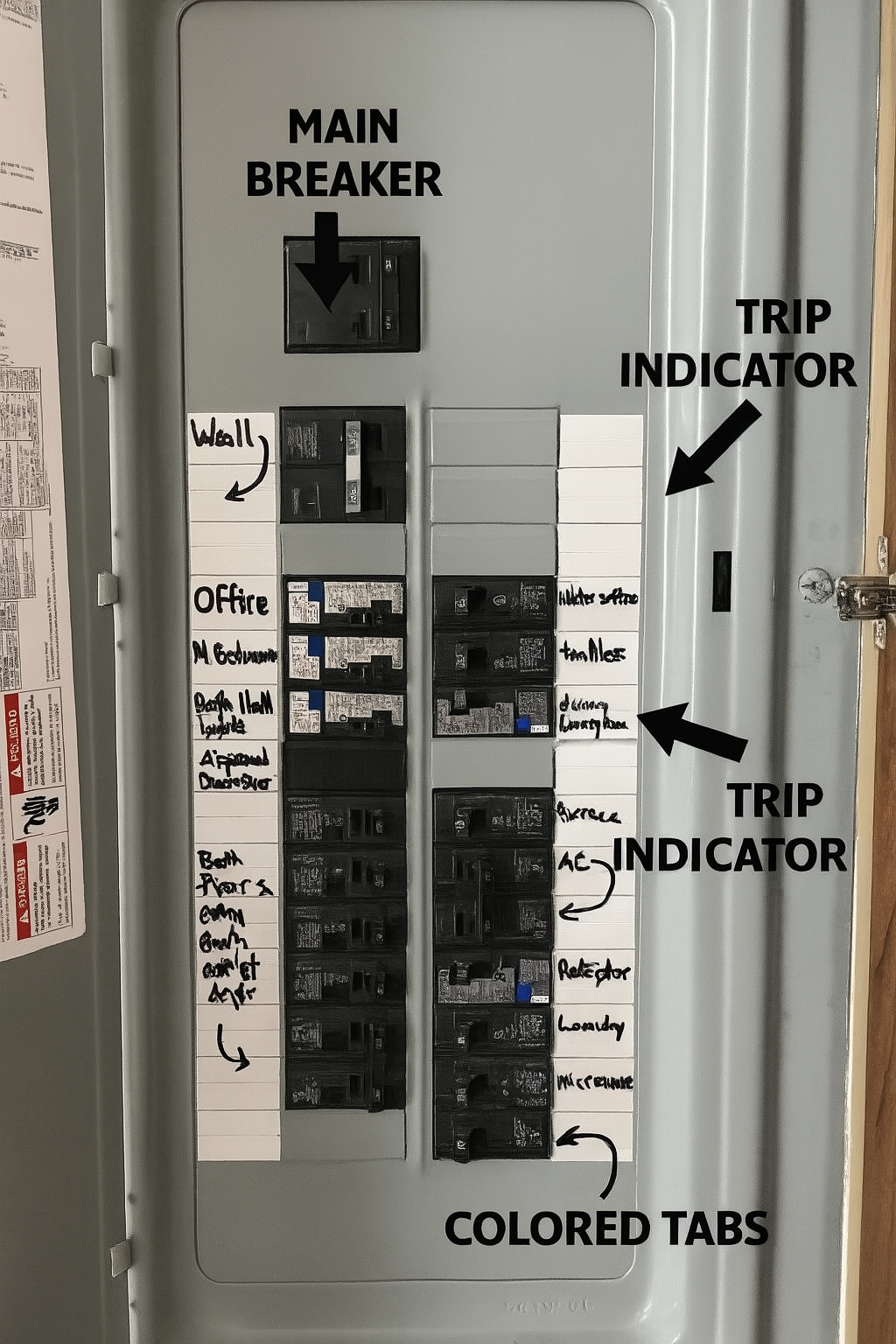
Safety First: Gear You Need
Before you even lift the panel door, prioritize personal protection. Rubber-soled shoes will help insulate you from accidental grounding, while insulated gloves add an extra layer of defense against electric shock. A reliable flashlight is essential when the panel area itself is dark, and a clean, dry cloth can remove any moisture that might compromise your grip or insulation. Under no circumstances should you work with wet hands or bare feet, and if you ever detect the smell of burning plastic or see scorch marks around the panel, stop immediately and contact a licensed electrician to avoid serious injury.
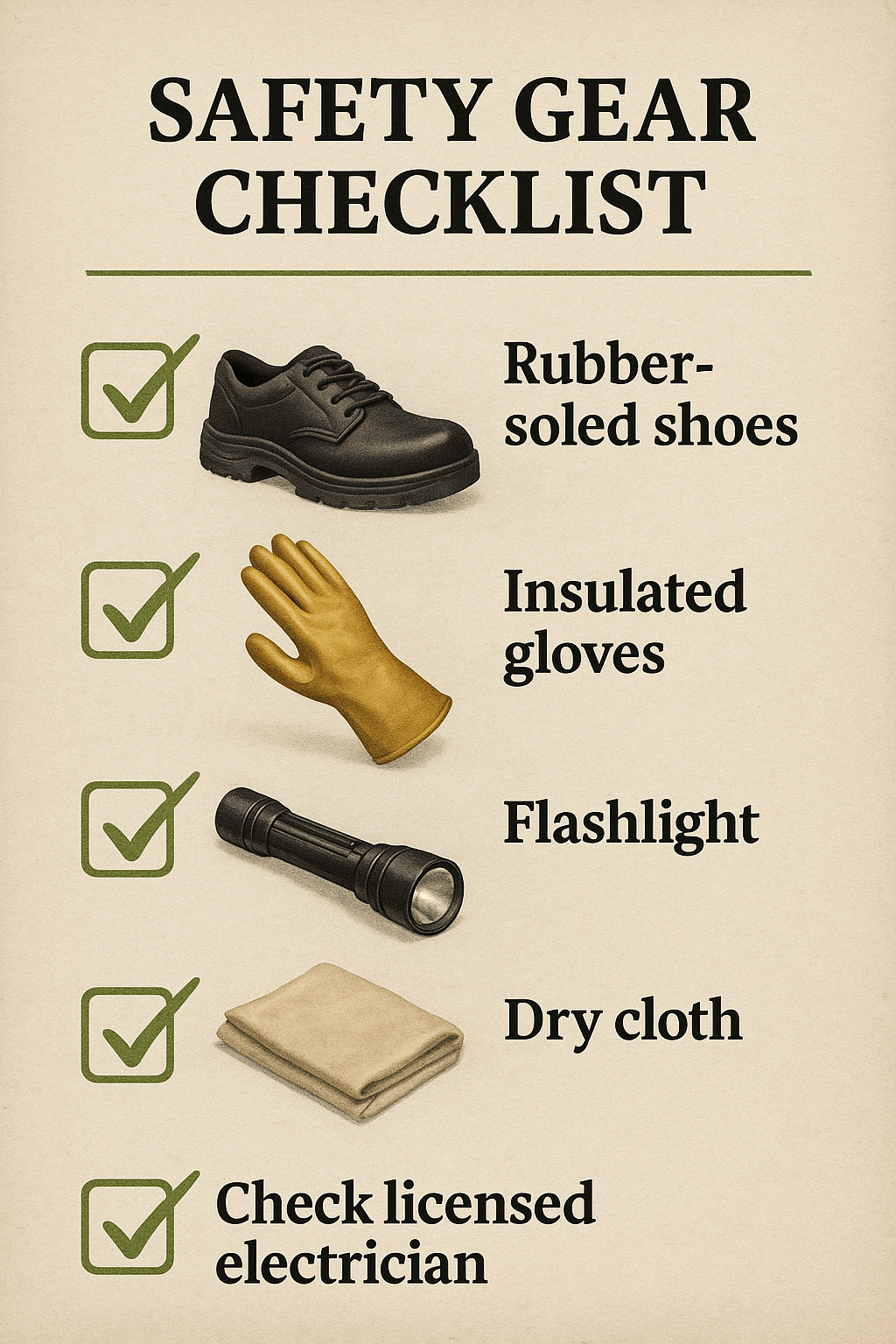
Finding Your Breaker Panel
Most homes house their main breaker panel in out-of-the-way spots—garages, basements, utility closets, or hallways. Once you open the metal door, you’ll see a larger switch that controls power to the entire house, followed by an array of smaller branch breakers typically labeled according to rooms or appliances: “Kitchen,” “Washer,” “Living Room,” and so on. If labeling is unclear or incomplete, consider mapping your circuits after power restoration by turning breakers on and off one at a time and walking through the home to note which outlets and fixtures lose power. This mapping not only makes future resets faster but also aids in troubleshooting complicated electrical issues.
Resetting the Tripped Breaker
Identifying a tripped breaker is usually obvious: the switch will rest between the “ON” and “OFF” positions or display a colored indicator tab. To reset, first push the lever firmly to “OFF” until you feel it click, fully discharging any residual current. Next, with a decisive motion, flip the breaker back to “ON” until you hear a solid click. If the breaker refuses to stay in the “ON” position or immediately trips again, leave it off; forcing the switch can damage the breaker mechanism and conceal an ongoing electrical fault that requires professional diagnosis.
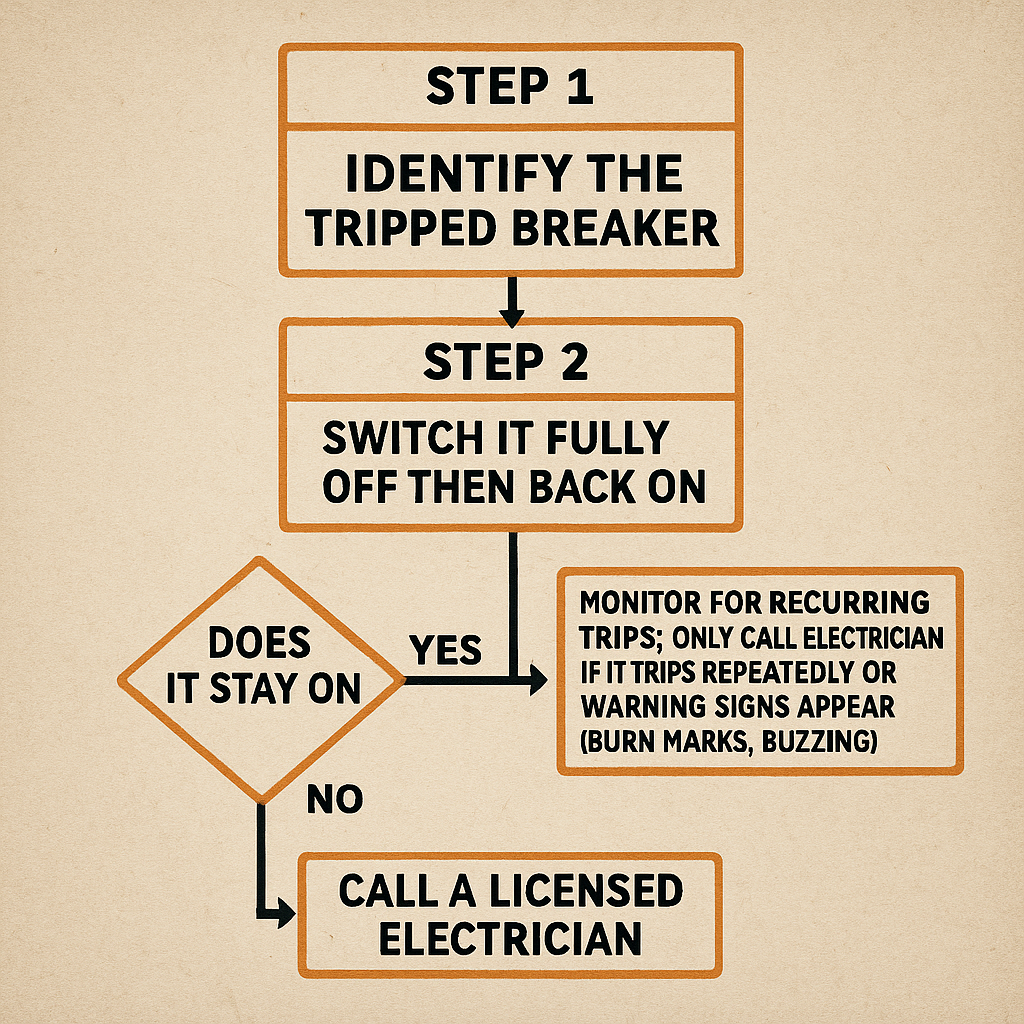
Restoring Power Gradually
Once the breaker is reset, avoid plugging in every device at once. Begin by turning on or reconnecting one appliance at a time—starting with low-draw electronics such as lamps or clocks—and observe whether the breaker holds. Slowly reintroduce higher-powered devices like microwaves or space heaters, monitoring for any sign of strain. This methodical approach helps pinpoint a single problematic appliance or circuit and prevents repeated trips that stem from sudden, large power draws.
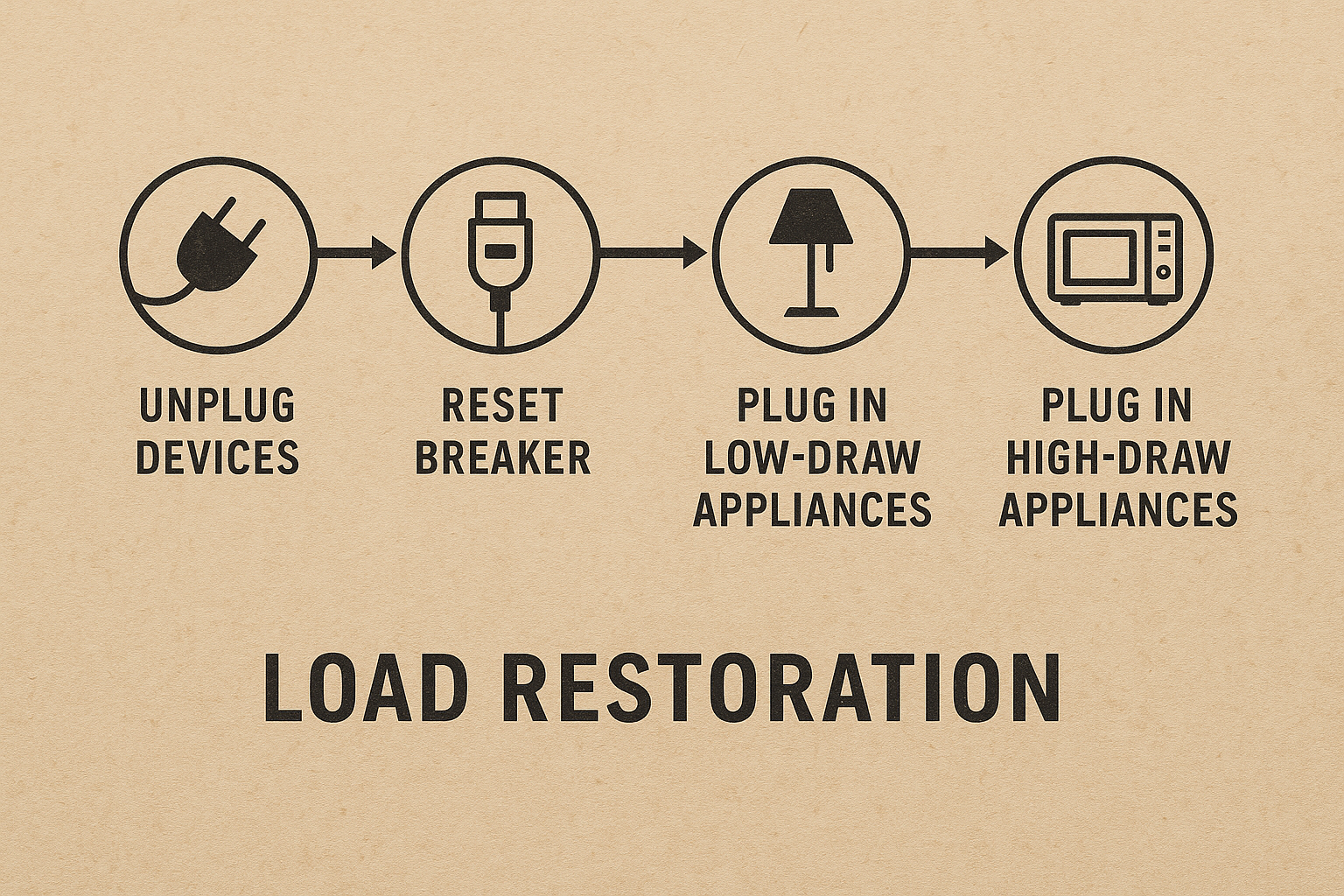
Troubleshooting Persistent Trips
If your breaker still won’t stay on under minimal load, it’s time to investigate further. Inspect power cords and plugs for signs of wear: exposed wires, frayed insulation, or burn marks. Use an inexpensive outlet tester to check for wiring errors or ground faults at your receptacles. Should these basic checks fail to uncover the issue, resist the urge to continue resetting the breaker; instead, hire a licensed electrician. Professionals have specialized tools and expertise to locate hidden wiring defects, replace faulty breakers, and ensure your entire electrical system meets current safety codes.
Preventing Future Breaker Trips
Long-term reliability hinges on load management and system upgrades. Distribute high-powered appliances across separate circuits whenever possible to avoid overloading a single line. If certain areas of your home consistently trip breakers—such as kitchens with multiple cooking appliances—consider installing dedicated circuits or higher-capacity breakers through professional electrical work. Surge protectors shield sensitive electronics from voltage spikes, reducing unnecessary trips, and scheduling annual inspections with a qualified electrician ensures that panels, breakers, and wiring stay in optimal condition over time.
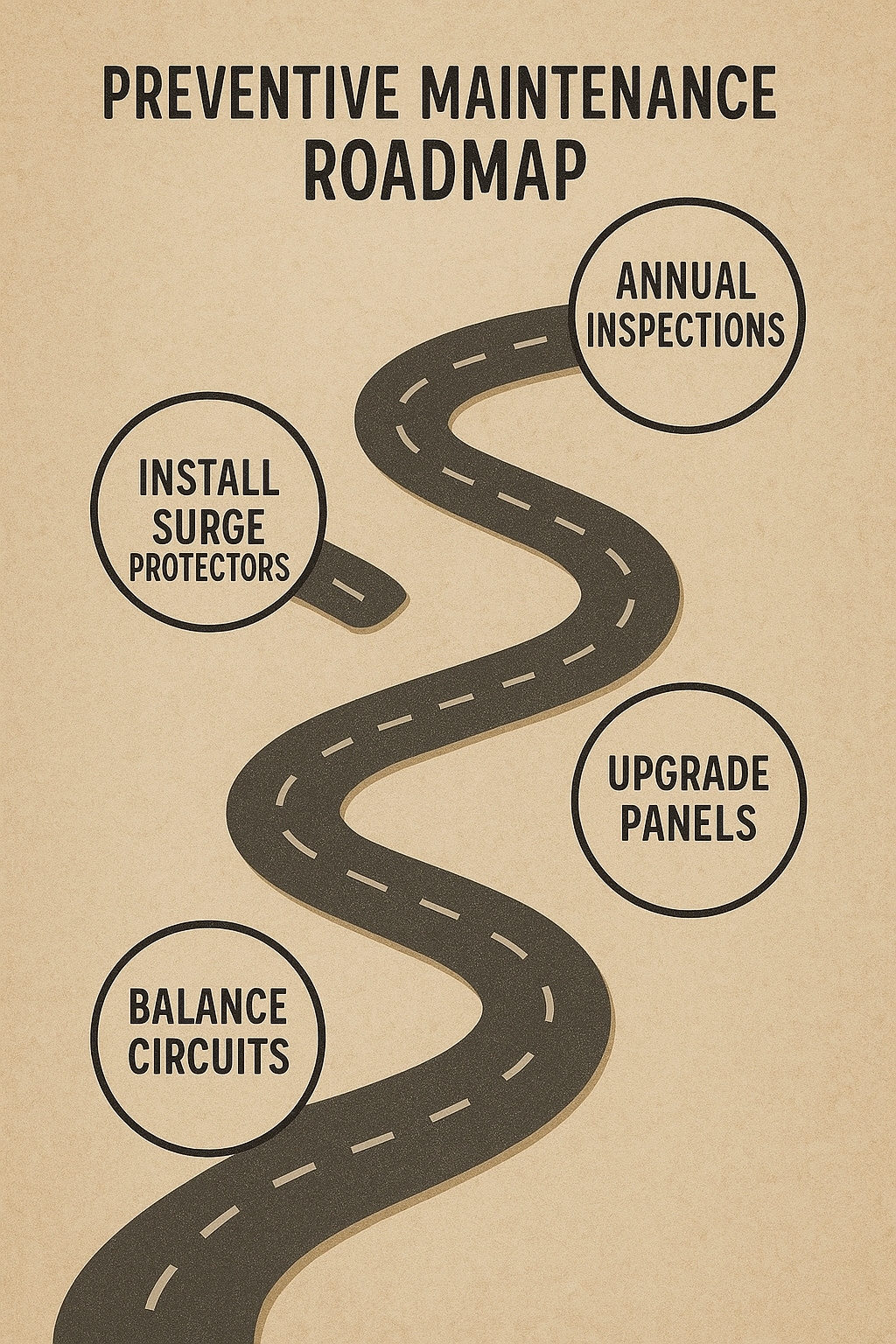
Conclusion
Resetting a tripped circuit breaker is a vital home-maintenance skill that can save time and frustration, but true peace of mind comes from understanding why the trip occurred and taking preventive measures. By equipping yourself with the right safety gear, mapping your breakers, and following a careful reset and restoration sequence, you’ll minimize disruptions and guard against latent faults. Should persistent trips or visible damage surface, turning to a licensed electrician not only protects your household but also upholds compliance with evolving electrical standards. Armed with these best practices, you can trust that your home’s electrical system will deliver consistent performance and safeguard what matters most.
If you’d rather leave it to the professionals, reach out to us. We’ve been serving residential and commercial clients in Grass Valley, Nevada City, North Auburn, Truckee, and Downieville, CA, since 1984, offering everything from panel upgrades and changeouts to generator installations, EV charger setups, lighting design, heated roof cable installs, remodel and new-construction wiring, and comprehensive troubleshooting. Call us at (530) 277-0917 or visit our website’s contact form to schedule service Monday through Friday, 7 am–10 pm. We’re here to ensure your home’s power remains safe, reliable, and code-compliant.
FAQs
What should I do if the breaker trips immediately after resetting?
First, disconnect or power down all devices on that circuit. If the breaker still cuts off under no load, this suggests an internal wiring fault or a malfunctioning breaker mechanism, and you should cease DIY attempts and call a professional electrician for a thorough examination.
Is it safe for a homeowner to reset a breaker?
Yes—provided you wear rubber-soled shoes, ensure hands and the work area are dry, and follow the OFF-then-ON procedure without rushing. However, if you notice any burning odors or physical damage to the panel, stop and seek licensed assistance immediately.
How often should I test my circuit breakers?
Aim to manually trip and reset each breaker twice a year. Regular testing prevents internal components from sticking and ensures reliable performance when you really need it.
Can a GFCI outlet reset a main breaker?
No. A GFCI outlet protects against ground faults on that specific circuit and features its own reset button. It does not control or reset the main breaker, which guards against overloads and short circuits on the entire electrical panel.
What’s the difference between a fuse and a circuit breaker?
Fuses employ a metal strip that melts under excessive current, requiring replacement after each fault. Circuit breakers mechanically trip and can be reset multiple times without part replacement, offering more convenience and long-term cost savings.

